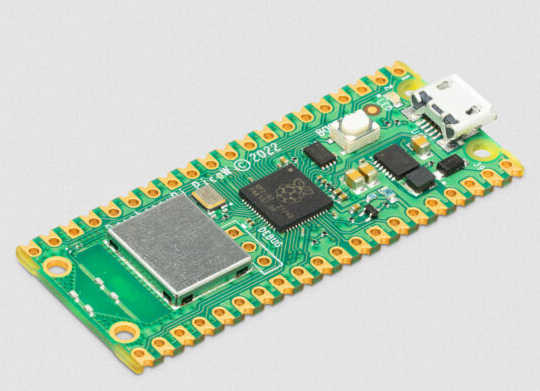| Pi Pico W $6 WiFi |
| Written by Harry Fairhead | |||
| Thursday, 30 June 2022 | |||
|
The Raspberry Pi Pico is an amazing device that seems to have sold 2 Million since it launched last year. But until now it had one big drawback - no WiFi. Now the newly announced Pico W gives you WiFi, and potentially BlueTooth, for $6. This breakthrough is the start of something new and important. UPDATE: I Programmer Library books covering the features in both the Pico W and the original Pico in C and MicroPython have been published. They are Programming the Raspberry Pi Pico/W in C, Second Edition and Programming the Raspberry Pi Pico in MicroPython, Second Edition UPDATE: February 11,2023 The new SDK 1.5.0 is now available for download from the Raspberry Pi GitHub page. The two big improvements are the addition of the BTstack library and mbedtls bringing support for Bluetooth and the ability to add cryptography to your applications repectively. See Raspberry Pi Pico W Latest SDK + Bluetooth And Crypto The Raspberry Pi Pico is a remarkable device. As its name suggests it is small but it it has a lot to offer. It has two cores, lots of I/O pins and a powerful state machine, the PIO, that can be used to offload I/O operations, leaving the CPU free to do other things. The one thing that has been ruling the Pico out of some applications is that it doesn't have any form of wireless connectivity. If you want to use it to create a sensor then no problem, but if you want that sensor to connect to WiFi or BlueTooth to send the data somewhere useful then you might be better off with a full Raspberry Pi or a Pi Zero if you want something small. Now you can pick the Pico for WiFi applications as well. The new Pico W has an Infineon CYW43439 wireless chip. The interface uses internal GPIO lines and there should be no compatibility problems with existing software. It provides WiFi 2.4GHz (802.11n) and BlueTooth, but at the moment the software only supports WiFi. The software supplied is based on the libcy43 libary, which is usually only for non-commercial use - but Pico W users get a free commercial use license which is a big relief all round. However, the code isn't open source. You can program the WiFi in C or in MicroPython. The icing on the cake is that all this costs just $6, compared to $4 for the original Pico which is still available, which makes it a competitor for the Pi Zero and the ESP32 range of devices. Although at the moment suppliers are limiting orders to one per person, there is no shortage of the RP2040 chip that all Picos are based on and this makes it much more sensible for a potentially commercial project than the Pi Zero, which continues to be restricted to one per person - when you can find one in stock. There are also two new minor models - you can buy both a Pico and a Pico W with header pins already soldered into place. Why bother with the full Pi when the Pico now does it all? The answer is that the full Pi runs Linux and for some applications this is a big attraction - you can run a web server for example. The Pi and the Pico now cover a very wide range of applications with the Pico being very attractive for low-cost WiFi-connected tasks. This makes lots of new applications possible with the Pico W and it looks as if it will be easy to upgrade existing Pico apps to be connected.
More InformationRaspberry Pi Pico W: your $6 IoT platform Related ArticlesThe New Raspberry Pi Pico Breaks The Mold Pi Compute Module 4 - Time to Take Industrial Pi Seriously Raspberry Pi 4 Sets New Performance High At Same Cost The Remarkable Rise of Raspberry Pi Pi Zero Wireless A $10 Birthday Present To be informed about new articles on I Programmer, sign up for our weekly newsletter, subscribe to the RSS feed and follow us on Twitter, Facebook or Linkedin.
Comments
or email your comment to: comments@i-programmer.info
|
|||
| Last Updated ( Saturday, 11 February 2023 ) |




